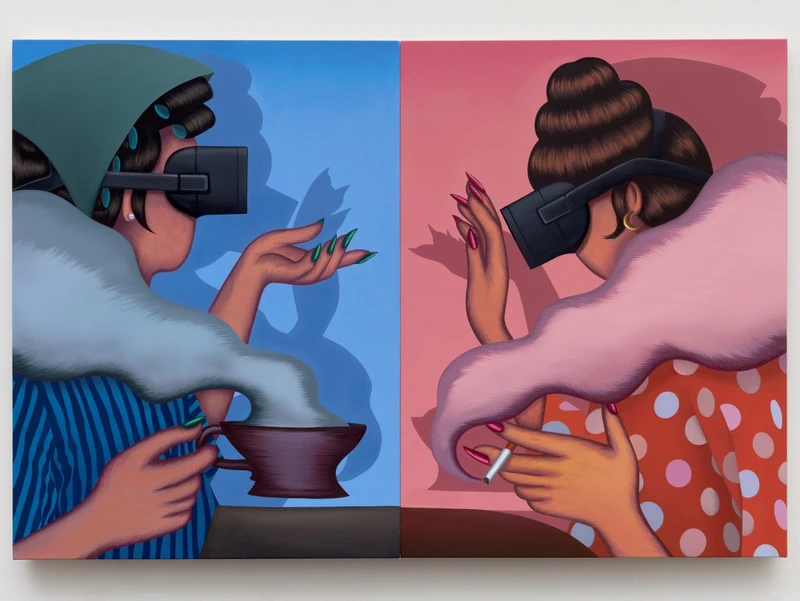Julie Curtiss : Monads and Dyads
14 May-26 Jun 2021


Booking is required before you visit. Advance tickets can be booked here.
White Cube is pleased to present ‘Monads and Dyads’, Julie Curtiss’ first exhibition in London, featuring new paintings, works on paper and sculptures. Curtiss’ paintings are carefully composed, framed and cropped with a cinematographic instinct for arresting image and a keen eye for the absurdities of everyday life. With their saturated colour, crisp detail, and scenarios which are at once banal and bizarre, they have a dreamlike quality.
Curtiss’ visual language draws on a history of figuration that includes 18th- and 19th-century French painting, as well as the Chicago Imagists and the ‘pop’ imagery of comic books, manga and illustration. Through the use of unexpected juxtapositions of subject with object, of the seen and the implied, and exaggerated cartoon-like forms, her paintings are infused with a direct and deadpan humour, revealing the uncanny within the familiar and the grotesque and surreal undertones of human characteristics and behaviour. Known for her surrealist re-workings of archetypes of femininity, in this new body of work the artist expands from the intimate and subjective to broader themes of the individual and society.
The exhibition’s title, ‘Monads and Dyads’, identifies an organising principle connecting these vignettes. Terms found in mathematics, philosophy, sociology and mysticism, the monad (one) denotes the singular or the individual, self-contained and indivisible, and is represented by the circle: it is associated with the divine and can be found in the mandala and in the halo. The dyad (two) is a doubling, potentially a generative coupling, but also implying binary systems and dynamics of opposition. These concepts find expression both thematically and formally in Curtiss’ paintings, while, according to the artist’s theory of number, the exhibition itself contributes a third strand, allowing them to be braided into one. Curtiss found that these concepts also resonated with her perception of contemporary society: its tendency to individualism and atomisation, even before the circumstances of the pandemic enforced physical isolation; and simultaneously, the increasing polarisation of identity and opinion into diametrically opposed encampments.
Curtiss’ imagery has long fed on the dualities that fuel surrealist juxtapositions – male and female, attraction and repulsion, animate and inanimate. Twins, doubles and reflections – sometimes false – proliferate in her work. A strong central axis of symmetry in the elaborate terrazzo floor of Lobby (2020) demarcates a binary opposition of masculine and feminine, represented by the smartly-clad feet of mysteriously ranked men and women. States of Mind (2021), which shares a mid-century atmosphere, bar the anachronistic virtual reality headsets worn by its subjects, also sets up an expectation of twinning only to frustrate it, while Ghost (2021) plays a similar game with a deceiving mirror.